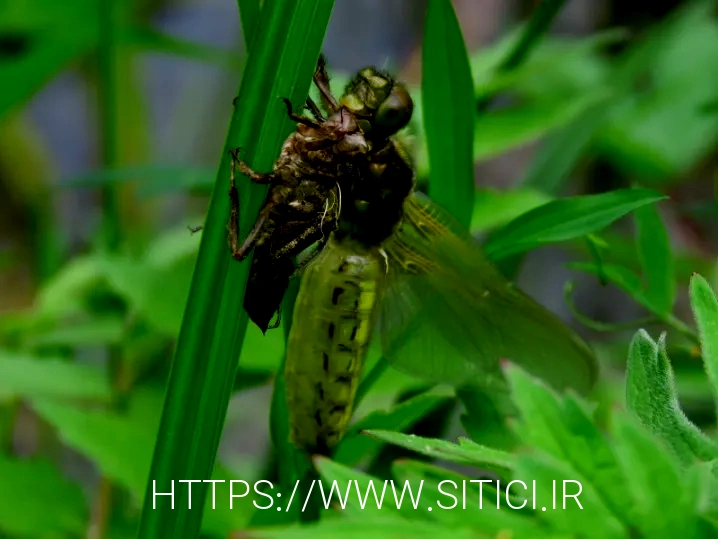What Does a Beaver Eat?
Castoreum has been used in medicine, perfume, and food flavoring; beaver pelts have been a major driver of the fur trade. Before protections began in the 19th and early 20th centuries, overhunting had nearly exterminated both species. Their populations have since rebounded, and they are listed as species of least concern by the IUCN Red List of mammals.
In human culture, the beaver symbolizes industriousness, especially in connection with construction; it is the national animal of Canada. A beaver dam or beaver impoundment is a dam built by beavers to create a pond which protects against predators such as coyotes, wolves and bears, and holds their food during winter. These structures modify the natural environment in such a way that the overall ecosystem builds upon the change, making beavers a keystone species and ecosystem engineers. They build prolifically at night, carrying mud with their forepaws and timber between their teeth.
But, when chewing through larger branches and tree trunks, the beaver allows the wood pieces to fall from its mouth, as you can see in the following video. If you have an orchard near a beaver colony, you may begin to notice damage to trees, stripped limbs, and fruit going missing. The best way to remove beavers from your area is to catch and release them somewhere else, using apples, apple or cherry leaves, or bark to bait your live animal traps. As mentioned above, beavers are herbivores; they don’t eat animals of any kind.
“Although otters eat fish, beavers are herbivores – they generally just eat the leaves of trees such as willows and aspens,” says Brazier. Beavers are on the brink of extinction in a large number of states due to endangering their habitat. Luckily, people start paying attention and take care to protect them. A healthy diet is a significant part of beavers’ lives, so it is crucial for them to find necessary wood plants, grass, and aquatic plants to survive. Most scientific studies show that beavers’ affection for the fish population is negligible.
That said, there are rare occasions when beavers pose a threat to the local fish population. Beavers also get small amounts of water from eating fruit, leaves, or anything that has recently been rained on. Gnawing on wet wood may also supply them with small fractions of their daily water intake. Beavers have dexterous front feet that can hold objects, much as a person would, although they do not have opposable thumbs.
Besides silt, the beaver dam collects twigs and branches from the beavers’ activity as well as leaves, notably in the autumn. The main component of this material is cellulose, a polymer of β-glucose monomers. Just as algae receive energy from sunlight, these bacteria derive energy from cellulose, and form the base of a very similar food chain. Despite living in and around water, where fish would likely be a plentiful source of food, beavers don’t eat fish. They are herbivores, preferring a wide variety of plant foods over other types of animals, including fish.

Among other areas, he studies the reintroduction of Beavers in the southwest of England, particularly how the animals modify the landscape. His work has been published in journals including the Journal of Applied Ecology, Restoration Ecology and Ecological Solutions And Evidence. Over time, beavers have evolved to have a handy comb on their back foot. On their right side, one of their claws has a cleft or split in the middle, which comes especially useful when grooming.
Beavers tend to build their dams in summer and fall, so be on the lookout for these impressive structures. There are several reasons why beaver dams increase salmon runs.[21][22][23] They produce ponds that are deep enough for juvenile salmon to hide from predatory wading birds. They trap nutrients in their ecology and notably the nutrient pulse represented by the migration of the adult salmon upstream.
You may be able to spot the dams even if the reclusive beavers duck out of sight into the water. You can also trace their tail dragging marks, and their gnawed tree areas. If you see a beaver in an aquatic area, you can be assured that area is ecologically healthy. The surface of any stream intersects the surrounding water table. By raising the stream level, the gradient of the surface of the water table above the beaver dam is reduced, and water near the beaver dam flows more slowly into the stream.
No, beavers don’t actually live in dams – but they still serve a special purpose. Beavers will find new food sources while nature gets time to recover and regenerate. Once the new place becomes inappropriate, beavers will often head back to the previous location. Once their supplies run out or food sources become reduced in the area, beavers will move to better locations.
Regardless of region, beavers seem to favor the leaves and bark of aspen and poplar trees more than anything else. Both of these trees grow widespread near water sources in most habitats where beavers establish their colonies. If a beaver pond becomes too shallow due to sediment accumulation, or the tree supply is depleted, beavers will abandon the site. Eventually the dam will be breached and the water will drain out. The rich thick layer of silt, branches, and dead leaves behind the old dam is an ideal habitat for some wetland species. A period between afternoon and dawn is ideal for building dams and collecting food.
Beavers are then likely to recolonize the area, and the cycle begins again. When a beaver dam bursts, the resulting flash flood may overwhelm a culvert. What happens if the water level rises too far in winter and the lodge gets flooded?
This may also help in reducing flood waves, and increasing water flow when there is no rain. In other words, beaver dams smooth out water flow by increasing the area wetted by the stream. This allows more water to seep into the ground where its flow is slowed. Rivers with beaver dams in their head waters have lower high water and higher low water levels. Tree parts – In most cases, beavers don’t eat trees after cutting them down.

Large birds of prey have been known to take juvenile beavers. “This is why if you’re lucky enough to see any signs of beavers – think chewed timber – you should be very quiet and move very slowly,” says Brazier. Lodges in the UK can be a whole 10m across, requiring dams around 100m in width. The world’s biggest dam – discovered in Alberta, Canada – measures a massive 500m in length and could get several hundred meters longer if it connects with nearby dams in future. Contrary to myth, however, it can’t actually be seen from space. Leftovers – Beavers are not omnivores and will never eat leftovers from your meal.
As you might imagine, this could cause problems if a colony of beavers lives near a farm or orchard, especially during periods of drought. Beavers don’t limit their taste buds to leaves and bark though. According to the National Park Service, they also enjoy a wide variety of softer plants such as clover, grass, water lily tubers, ferns, ragweed, cattails, and even some mushrooms. Aside from aspen and poplar, though, beavers will eat leaves and twigs off of many trees, especially willow, black cherry, cottonwood, birch, and alder. These produce scent for communication and territory marking, and oil to waterproof their fur, respectively.
Some of these toxicants are metabolized and decomposed by the bacteria in the cellulose-rich bottom of a beaver dam. Like most night-time animals, this behaviour helps them avoid predators. However, with most of their predators now extinct in the UK, resident beavers are only truly nocturnal out of habit. Interestingly, one dam can host generations of beavers, with lodges standing as long as beavers are active in the region. For example, although beavers live for eight years on average, it’s believed the aforementioned dam in Alberta was first constructed in 1970. There’s no set number – a dam and lodge could hold anything from a pair of beavers to 10.

Beavers are so important in ecology that they are known as a keystone species. What this means is, is that their very presence affects entire ecosystems. Beavers create habitats for many wetland species, and they help to aid water quality. Animals that benefit from beavers include frogs, salamanders, turtles, fish, ducks, otters, owls, insects and many other species.
This provides a valuable niche for many animals which otherwise would be excluded. Beaver dam creation also increases the plants the dams were made from (such as willows) to reproduce by cutting, encouraging the growth of adventitious roots. So, with the basics covered, chances are you’re now poised with a stream of related questions. From how long dams last for, to what food beavers eat inside their lodges, you can find a (river)bank of answers below. Not only are these ponds deep enough to deter land animals, but they also allow beavers to dig underwater entrances into the lodge. This means that if danger emerges, they can safely exit or escape through these tunnels.
In fact, just in case they get frozen into their pond, beavers create a food store below their lodge. After finding food, beavers have a clever way of creating a shortcut back home. Having located a particularly scrumptious willow tree, for instance, a beaver may dig out a small canal through the riverbank that leads straight back to their dam.
Beavers even make a short of chimney or skylight when they build their lodges, to allow fresh air in. And beavers keep the floors of their rooms tidy with wood shavings. Beavers are herbivores, so they don’t eat fish or other animals. They also don’t eat wood, despite what it may look like when they are chewing on trees.
This rodent has two coat layers, including a gray undercoat and a long red-brown outer layer.
The rear feet of beavers are much larger and have webs between their toes that aid in their swimming. Their hind feet also possess a special toe called a preening toe that has a double toenail and allows beavers to comb and keep their fur in prime condition. Beavers must be able to find objects in dark water and other dim areas such as their lodges. Their eyes possess a special membrane that covers them while the animal is submerged. While they do not have excellent vision, their whiskers aid them in detecting things.
They fare much better in water, where they can swim as fast as 6 miles per hour. And when they need to, they can stay under water for as many as 15 minutes. This probably explains why you haven’t seen any during your riverside treks. Conifers – When a beaver is really hungry and there is no other food available, it will eat conifers like fir, hemlocks, Sitka spruce, and pine. They also have a disgusting habit of eating their own droppings, but it is an excellent way to stay well-fed by absorbing more nutrition from food. J. Dianne Dotson is a science writer with a degree in zoology/ecology and evolutionary biology.
After their first year, the young help their parents repair dams and lodges; older siblings may also help raise newly-born offspring. Beavers hold territories and mark them using scent mounds made of mud, debris, and castoreum—a liquid substance excreted through the beaver’s urethra-based castor sacs. Beavers can also recognize their kin by their anal gland secretions and are more likely to tolerate them as neighbors. They are famous for building dams and lodges in aquatic areas. If you have ever wondered what beavers eat and thought only “trees,” you would be partially correct. However, beavers eat a variety of plants and have ingenious ways to make sure there is food available all year long.

Even though they never eat fish, their dams can block some fish species migration and consequently decrease their population. Beavers that live in the northern regions store food in deep water close to their lodge and cover it with a layer constructed of leafy branches. That supply collected in a food cache allows them to survive the winter when there is a food shortage while storing technique keeps food safe from freezing. Interestingly, beavers’ diets will vary depending on the season. They eat soft and woody plants in spring and fall while choosing mostly soft food during hot summer days.
A common misconception about beavers is that they eat wood whenever they chew through trees and tree branches. Yes, beavers love apples; they also enjoy chewing on apple tree wood and bark. In fact, both apple and cherry trees are some of their favorite go-to trees in the absence of aspen and poplar. Doeat.top Omnivorous animals Since beavers live in and near water sources, they usually have a plentiful amount of water always available to them. They will drink from their own ponds or other nearby water sources as needed. In fact, if food is scarce, beavers may even resort to eating human crops such as corn and beans.



